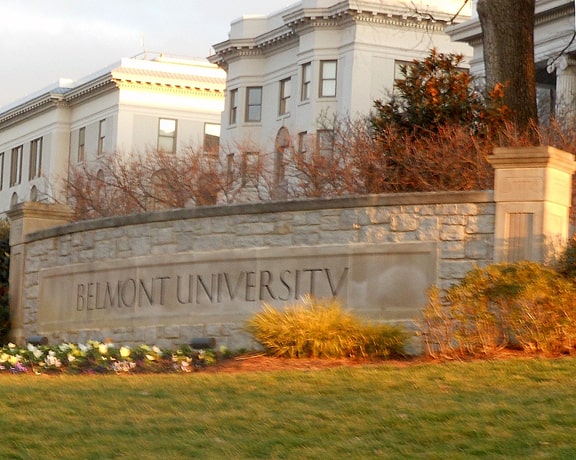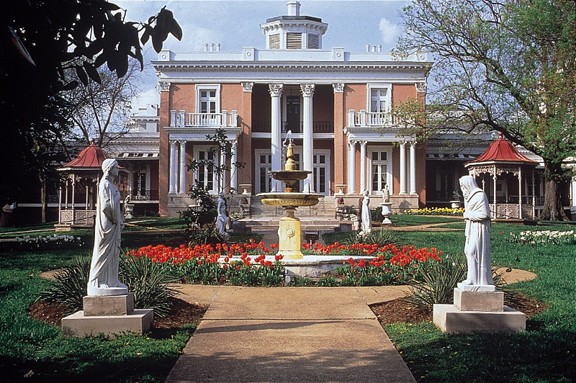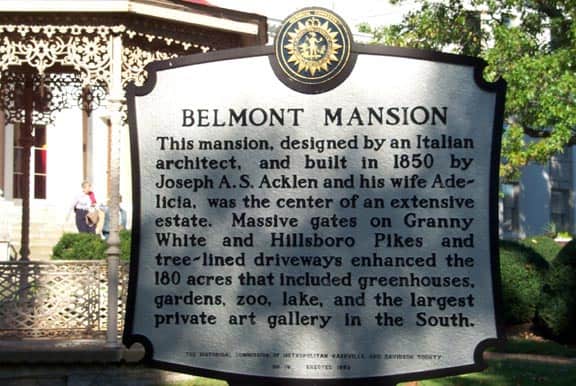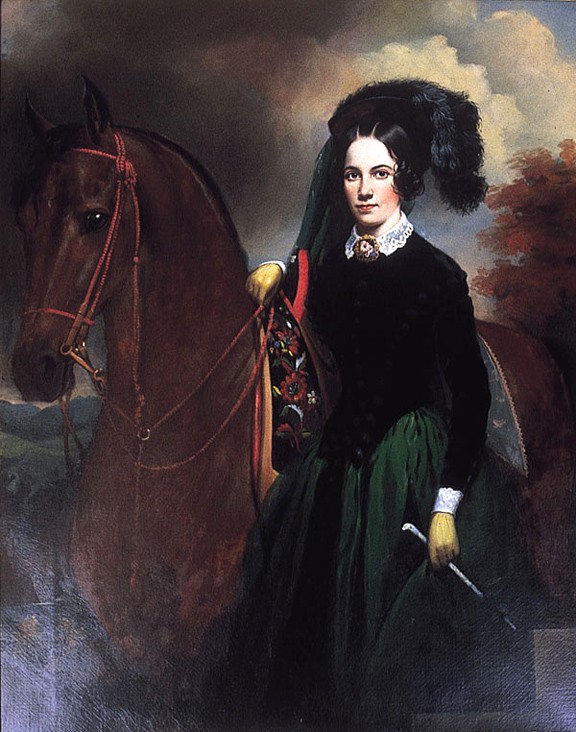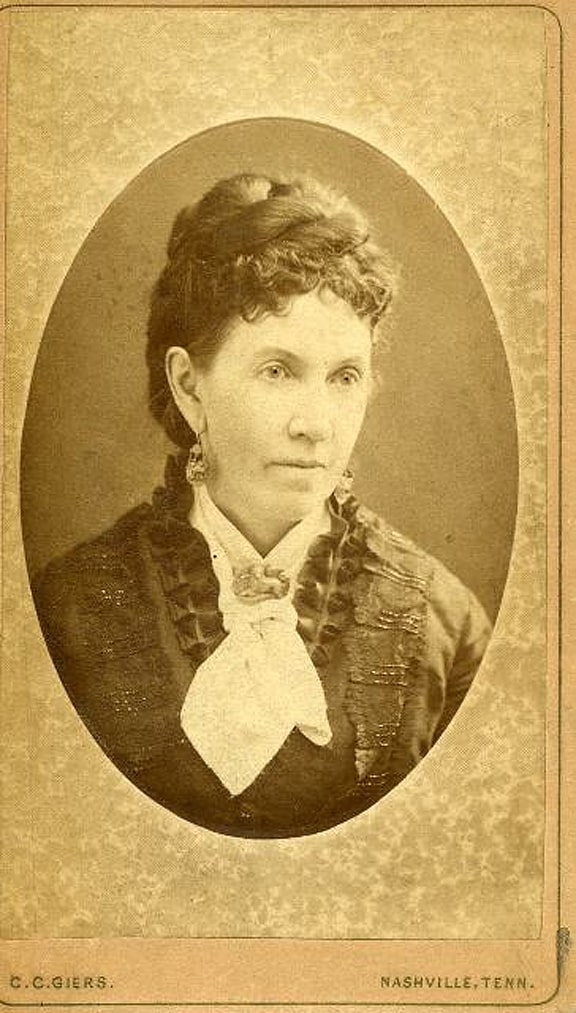Today I toured Belmont University in Nashville, Tennessee as part of a business project with my company FMG Design and had the good fortune to get a personal tour of the center-piece Belmont Mansion. I do not have pictures of old bottles and glass here today except for the formal dining room photograph, but I did quiz a few folks about campus building projects, excavations and locations for dumps on the campus. All well preserved, I can only wonder what may have been beneath my feet today. I kept hoping to ‘bump into’ a cache of Imperial Levee’s Adelicia Acklen brought back from one of her southern plantations. There is some great history here folks.
Belmont Mansion, also known as Acklen Hall, and originally known as Belle Monte, Belle Mont or Belmont, is a historic mansion located in Nashville, Tennessee on the campus of Belmont University that today functions as a museum.
[Wikipedia] In 1849, Adelicia Hayes Franklin married Joseph Alexander Smith Acklen, a young attorney from Alabama, and they immediately began construction of Belle Monte (Belmont) on 180 acres (73 ha) in Davidson County. It was completed by 1853 as an Italian villa style summer home. Adelicia and Joseph used Belmont as a summer home to escape from the heat of Adelicia’s seven Louisiana cotton plantations, which totaled 8,600 acres. The Acklens built, furnished, and landscaped one of the most elaborate antebellum homes in the South, totaling 36 rooms and 19,000 sq ft. The estate contained a variety of buildings with the house adorning the top of the hill. Beside the house, there was a T-shaped guest house and art gallery. The south wing of the guest house contained guestrooms and a bowling alley. The art gallery had a corrugated glass roof and comprised the north wing. The grounds also included lavish gardens, conservatories, aviary, lake and a zoo. The conservatories housed tropical fruit and flowers along with camellia japonica, jasmine, lilies, and cacti. The zoo featured bears, monkeys, peacocks, singing birds, a white owl, alligators from Louisiana and a deer park. Covered balconies with cast iron railing and trim surrounded the house to protect windows from the sun. Atop the house, a ten-foot octagonal cupola vented the house during the summer months and provided an “astronomical observatory” used for viewing the stars, the estate and downtown Nashville.
Joseph and Adelicia had six children together, but their twins died of scarlet fever at the age of 2 in 1855. In 1863, Joseph died in Louisiana while watching over the plantations during the Civil War. Left alone, Adelicia secretly negotiated agreements with both Union and Confederate authorities to allow 2,800 bales of her cotton to be shipped to Liverpool, England, and sold for a total of $960,000.
Despite a two-week occupation by Union General Thomas J. Wood prior to the Battle of Nashville, Belmont Mansion and its contents went undamaged during the Civil War. Only the grounds, where thirteen thousand Union troops spent those first two weeks of December 1864, suffered damage.
Immediately following the war, Adelicia and her four children traveled to Europe. While there, she continued amassing her large art collection, including five major marble statues by America’s most important sculptors working in Rome. These including works by Randolph Rodgers, William Rinehart, Joseph Mozier, and Chauncey Ives. Four of these pieces remain in the mansion today. Adelicia was also presented at the Court of Emperor Louis Napoleon and his wife Empress Eugénie.
Months before her death, Adelicia sold Belmont, and the surrounding land, to Lewis T. Baxter for around $54,000. In 1890, it opened as a women’s academy and junior college. The school merged with Ward’s Seminary in 1913 and was renamed Ward-Belmont. The Tennessee Baptist Convention purchased the school in 1951, and created a four-year, coeducational college. In 2007, Belmont University separated from the Tennessee Baptist Convention. Today the mansion is owned by the Belmont Mansion Association and Belmont University while it is operated and preserved by the Belmont Mansion Association.
Gilt frame mirrors hang over marble mantels reflecting the elaborate gasoliers and elegantly furnished parlors. Much of the original Venetian glass still adorns the windows, doors, and transoms of Belmont. The Grand Salon is considered by architectural historians to be the most elaborate domestic interior built in antebellum Tennessee. The gardens are now maintained as part of the University campus, including five cast iron gazebos. The 105-foot water tower remains on the grounds and today serves as a Bell Tower for Belmont University. The Belmont Mansion was placed on the National Register of Historic Places.
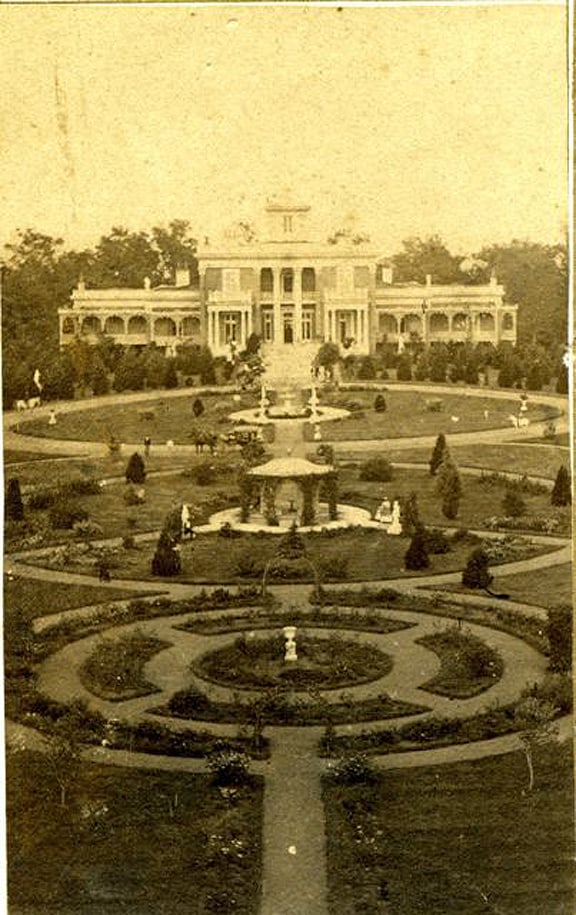
This is the earliest known photograph made of the mansion and the grounds by A. S. Morse a photographer who worked in Nashville when the Federal troops occupied Nashville during the Civil War.
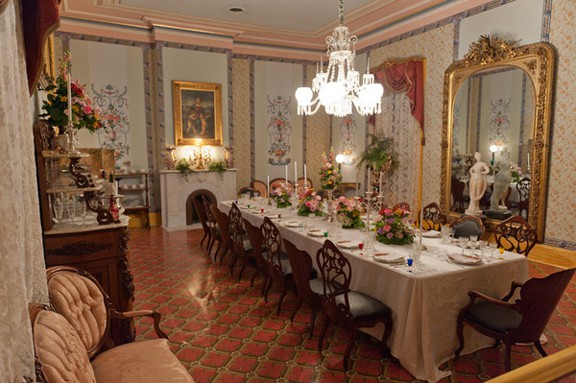
After more than a century in hiding, the Belmont Mansion’s formal dining room has been restored to resemble the room where Adelicia Acklen once hosted parties and ceremonial meals. The project took 12 years of research and restoration. Eight of the 18 seats around the formal dining room table are original chairs provided by the Acklen family.
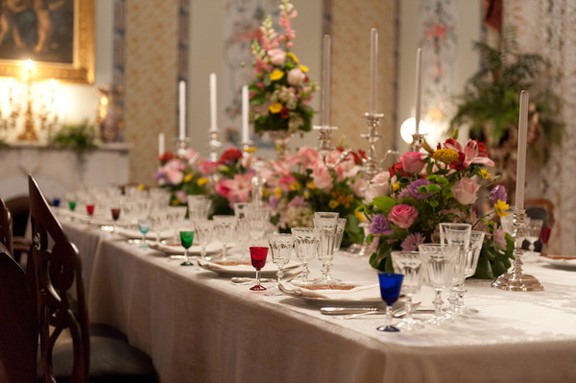
“Entertaining was such an important part of 19th century life, and the dinner was the apex of entertaining,” said Belmont Mansion Executive Director Mark Brown.
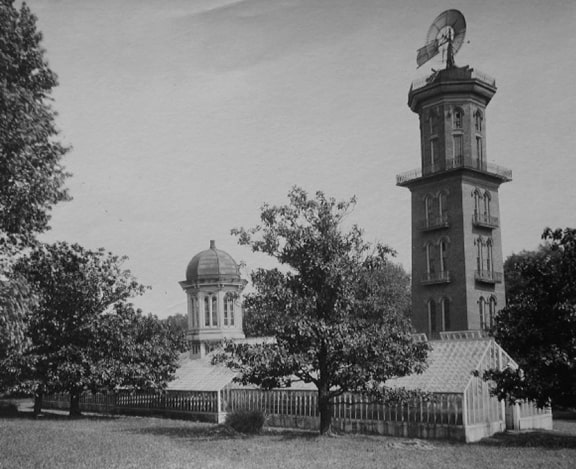
Around at 1857 the Acklens built the conservatoires and green house shown in this ca. 1895 photograph. The Water Tower was design by Adolphus Heiman and built in 1857. The Windmill was added following the civil War to replace the steam engine which was used to pump the water to the tank on top of the tower.
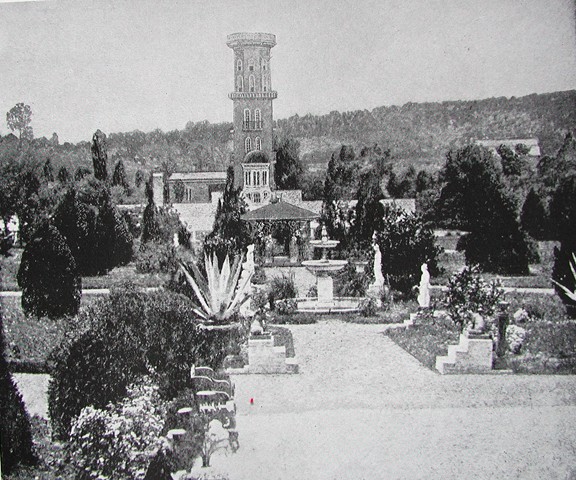
This is a view from the front steps of the mansion, circa 1875 showing the water tower in the distance
About Belmont Mansion, Battle of Nashville Preservation Society and Lotz House
A National Historic Site since 1971, Belmont Mansion currently operates as a house museum, maintained by the Belmont Mansion Association. Belmont Mansion is open daily for guided tours, Monday-Saturday from 10 a.m. to 4 p.m. and Sunday from 1 to 4 p.m. For inquiries you may visit our website www.belmontmansion.com or call 615-460-5459.
The Battle of Nashville Preservation Society, Inc. is dedicated to the preservation of historic Civil War sites in Davidson County, Tennessee. The BONPS is a non-profit 501(c)(3) tax-exempt organization with open membership. BONPS has been instrumental in helping preserve Fort Negley, Shy’s Hill, Confederate Redoubt No. 1, and the Battle of Nashville Monument, among other sites. For more information visit: www.bonps.org.
The Lotz House Foundation is a 501(c) (3) organization dedicated to protecting, preserving and educating people on the history and culture of the historic Civil War Battle of Franklin, Tennessee in 1864. The foundation is committed to enriching lives through preserving the stories of the time along with the lifestyle, furnishings and fine art of the period. For more information visit: www.lotzhouse.com.

